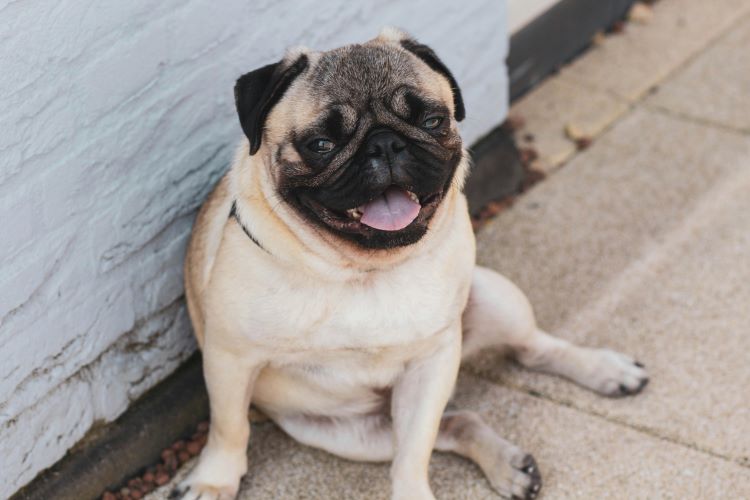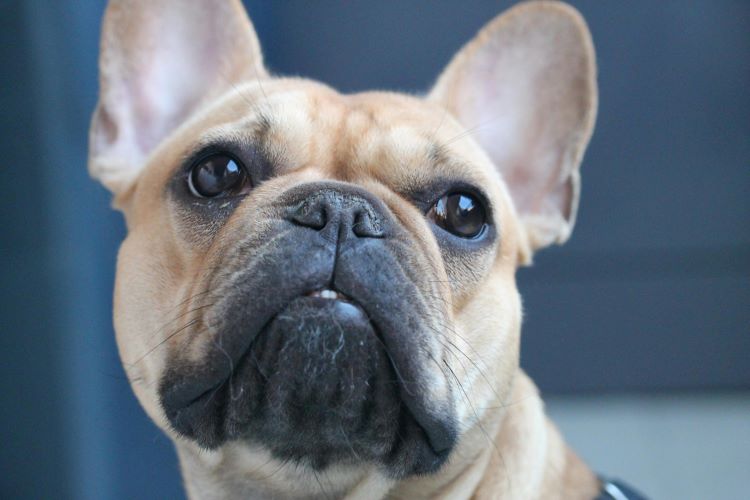Ready to help treat your pet to a healthy life?
Brachycephalic Dog Breeds: Health Concerns & Care Tips
By : Brianna Gunter | Published Apr 16, 2024

With their loving expressions and adorably snubbed muzzles, flat-faced dog breeds easily capture the hearts of many dog lovers. Nevertheless, behind their adorable looks lie certain health considerations that every prospective pet owner should be aware of. This is because these types of canines are known as brachycephalic dog breeds, and their physical structures can make it more challenging for them to breathe, among other concerns.
This doesn’t mean that you shouldn’t adopt a dog just because it is brachycephalic, of course. However, it does mean that you’ll need to know what their specific health risks are and how to properly care for your unique canine in order to be a responsible pet owner. Naturally, you’ll also want to find a veterinarian who is well-versed in these types of dogs and is attuned to your pet’s particular health needs.
We’ll go over a list of brachycephalic dog breeds and how to take proper care of them in just a bit. But first, we’ll discuss how exactly the appearance of these canines can impact their health and what conditions they’re at risk for.
What is brachycephaly in dogs?
Brachycephaly is a physiological condition in which the shape of a skull is shorter than average for a species. The term "brachycephaly" accordingly comes from the Greek words "brachy," meaning short, and "cephalic," meaning head.
While the condition has been found in a wide variety of species (including humans), it is particularly common in certain dog breeds due to selective breeding. This is because certain species were deemed more desirable or “cuter” with shorter, flatter faces and snubbed noses, so dogs with these traits were bred together until they became the breed standard. Nevertheless, it is possible to see examples of what brachycephalic dogs like Pugs and Boxers used to look like in paintings from previous centuries (specifically before the late 1800s).
In dogs, brachycephaly typically involves a shortened nasal structure with an upturned nose, short jaw with potential underbite, and a flat-looking face. The snout often appears “smushed” and may have noticeable folds alongside the nose and mouth. In many affected dog breeds, the eyes are also prominent and may appear either bulbous or sunken.
Health risks
The problems experienced by each dog with brachycephaly can vary greatly in severity and prevalence. That said, common health issues include the following:
- Brachycephalic Obstructive Airway Syndrome (BOAS) — This is one of the primary concerns associated with brachycephalic dog breeds. This condition can cause breathing difficulties, especially during physical exertion or in hot weather. Symptoms of BOAS may include snoring, wheezing, and excessive panting.
- Skin conditions — Many brachycephalic dog breeds are more susceptible to certain skin conditions, such as folds dermatitis, thanks to the folds and wrinkles in their skin. These areas can trap moisture and debris, leading to irritation and infection if not properly cleaned and cared for.
- Malocclusion — Improper alignment of the teeth, often caused by size differences between the upper and lower jaw. This can heighten the risk for dental disease and decay as a result of food particles getting stuck more easily in between teeth and/or making it more challenging for dental cleanings to do a thorough job.
- Overheating — Brachycephalic breeds are prone to overheating due to their compromised respiratory systems, making them more susceptible to heatstroke.

12 brachycephalic dog breeds
You can spot a brachycephalic dog by its flat face and notably short skull (compared with other dog breeds). These pups are often referred to as having a “smoosh” nose, and they include both large and small dog breeds. Below is a rundown of some of the most popular brachycephalic types of dogs, though this list is not all-inclusive. In addition to purebreds from these breeds, mixed-breed dogs can display brachycephalic characteristics and may be affected by the same health conditions depending on their genetics.
1. Bulldog
Bulldogs are known for their muscular build, wrinkled face, and distinctive pushed-in nose. They are a type of mastiff and are also referred to as the English Bulldog or, less often, the British Bulldog. These canines tend to have a gentle temperament and are renowned for being loyal companions. They have also served as mascots of numerous sports teams, universities, clubs, and other organizations.
2. French Bulldog
Not to be confused with the larger and more robust English Bulldog, French Bulldogs, or "Frenchies," are small, muscular dogs with a compact build. Still, one of the true hallmarks of the breed is its velvety soft, bat-like ears that are perfect for petting. These pups are also known for their affectionate nature and adaptable temperament.
3. Pug
Pugs are characterized by their wrinkled faces, curly tails, and charming personalities. They are playful, affectionate, and seem to thrive on human companionship, often forming extremely close bonds with pet owners. While Pugs are most commonly associated with having fawn (tan) bodies and black muzzles, they can come in a few different color varieties.
4. Boston Terrier
Boston Terriers are lively, friendly dogs with a tuxedo-like coat pattern and expressive eyes. They tend to be intelligent and eager to please humans of all ages, making them excellent family pets. It’s important to establish healthy habits and training skills early on with these dogs — as many Boston Terrier owners can attest, they tend to have a strong food drive and deep love of snacks!
5. Pekingese
The Pekingese or “lion dog” is a small canine with distinctive lion-like mane, floofy tail that curls upward, and, yes, a flat face. This breed makes for an independent yet affectionate companion, well-regarded for its regal demeanor. Like many other brachycephalic dogs, the Pekingese tends to have an upturned nose with a noticeable underbite.
6. Shih Tzu
Shih Tzus are small pups with a long, flowing coat and a distinctive pushed-in face. They are affectionate, outgoing, and enjoy being pampered. Despite their small stature, Shih Tzus are known for being surprisingly sturdy and energetic, making them great dogs for families with children looking for daily play sessions.
7. Boxer
Boxers are medium-sized dogs with a square jaw and distinctive underbite. They are playful, energetic, and often make excellent companions for active families. Though they are known for having fawn bodies with white chests and dark muzzles, they can also come with brindle coats or with white over a larger area. Originally bred as working dogs, Boxers with docked tails are a common sight, but this practice has grown less prevalent in recent decades.
8. Cavalier King Charles Spaniel
The Cavalier King Charles Spaniel is a British dog breed known for having a long, silky coat, expressive eyes, and a flat face. They tend to be affectionate, gentle dogs that thrive on human interaction. Both a lap dog and an energetic playmate, Cavalier King Charles Spaniels are a well-balanced pet for families and individuals alike.
9. Brussels Griffon
The Brussels Griffons or “Griffon Bruzellois” is a type of toy dog breed that comes in both smooth and rough coat varieties. In addition to their quirky personalities and affectionate natures, these cute pups are known for their distinctive "grumpy" expressions. They come in both short and longer-haired varieties, but this perpetual frown is accentuated even further among those with full beards.
10. Bullmastiff
Bullmastiffs are large, powerful dogs with wrinkled, flat faces. They also happen to be one of the world’s biggest dog breeds. But while they can look fearsome at times due to their size and droopy expressions, don’t be fooled — these big pooches tend to have calm, protective demeanors and are very affectionate toward those they view as family.
11. Affenpinscher
Affenpinschers are small, wiry dogs with a face many humans have described as “monkey-like.” In fact, “Affen” means “monkey” in German. In addition to their adorable appearance, these dogs are known for their playful, mischievous personalities that tend to make them both highly curious and amusing to be around.
12. Japanese Chin
Initially known as the “Japanese Spaniel” when it arrived in North America in the late 1800s, the Japanese Chin is a small, sweet-looking dog with a distinctive appearance and heritage. The breed dates back to the sixth century and gained fame as a popular lapdog in the royal courts of Japan and China. Today, the pup is beloved among a wide range of humans around the world as an affectionate, elegant dog that forms strong bonds with its family.

Care tips for pet owners
Having a brachycephalic dog does not necessarily mean they’ll suffer from detrimental health effects. However, it does mean that their health should be made a priority. With the proper care and attention, these dogs can live long, healthy lives. Here are some essential tips for caring for these unique companions:
Keep up with veterinary care
Schedule routine check-ups with a veterinarian experienced in brachycephalic dog breeds. Even if you don’t feel like anything is wrong, these regular vet visits are important to monitor your dog’s health and address any issues promptly.
Practice good pet hygiene
The unique nasal and jaw structure of brachycephalic dogs means that dental and skin hygiene are crucial to their well-being. Teeth should be brushed regularly, and they should receive annual veterinary dental exams (some dogs may need these more frequently). The folds and wrinkles around your pup’s face should likewise be cleaned regularly with a gentle dog-friendly cleanser to prevent irritation and potential infection. Talk with your veterinarian for further recommendations and care tips regarding your pet’s everyday hygienic maintenance.
Maintain your dog’s weight
Obesity exacerbates respiratory problems in brachycephalic dogs. In fact, some data collections show that BOAS is twice as likely in canines who are obese compared to those at a healthy (normal) body weight. So, it's crucial to find out what is a healthy goal weight for your dog’s breed and stature and then work to keep them at this goal through a balanced diet and regular exercise.
Avoid over-exertion
While exercise is important for the overall health of any dog, be careful with what kind of physical activity your brachycephalic dog is engaging in. These breeds should avoid strenuous activities that could exacerbate their breathing difficulties, and they can quickly start wheezing if over-exerted. Generally speaking, gentle walks are preferable to intense exercise sessions for these pups.
Protect your dog with pet insurance
Pet insurance does not cover pre-existing conditions in dogs, but it does provide coverage for surprise illnesses and injuries. In times of emergency or other cases where high treatment costs are a factor, having good health coverage in place can make all the difference in getting your pet the veterinary care they need.
